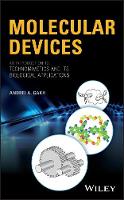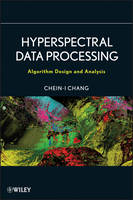Linear Position Sensors
 -15%
portes grátis
-15%
portes grátis
Linear Position Sensors
Theory and Application
Nyce, David S.
John Wiley & Sons Inc
12/2003
184
Dura
Inglês
9780471233268
15 a 20 dias
438
1. Sensor Definitions and Conventions.
1.1 Is It a Sensor or a Transducer?
1.2 Position versus Displacement.
1.3 Absolute or Incremental Reading.
1.4 Contact or Contactless Sensing and Actuation.
1.5 Linear and Angular Configurations.
1.6 Application versus Sensor Technology.
2. Specifications.
2.1 About Position Sensor Specifications.
2.2 Measuring Range.
2.3 Zero and Span.
2.4 Repeatability.
2.5 Nonlinearity.
2.6 Hysteresis.
2.7 Calibrated Accuracy.
2.8 Drift.
2.9 What Does All This about Accuracy Mean to Me?
2.10 Temperature Effects.
2.11 Response Time.
2.12 Output Types.
2.13 Shock and Vibration.
2.14 EMI/EMC.
2.15 Power Requirements.
2.16 Intrinsic Safety, Explosion Proofing, and Purging.
2.17 Reliability.
3. Resistive Sensing.
3.1 Resistive Position Transducers.
3.2 Resistance.
3.3 History of Resistive Linear Position Transducers.
3.4 Linear Position Transducer Design.
3.5 Resistive Element.
3.6 Wiper.
3.7 Linear Mechanics.
3.8 Signal Conditioning.
3.9 Advantages and Disadvantages.
3.10 Performance Specifications.
3.11 Typical Performance Specifications and Applications.
4. Capacitive Sensing.
4.1 Capacitive Position Transducers.
4.2 Capacitance.
4.3 Dielectric Constant.
4.4 History of Capacitive Sensors.
4.5 Capacitive Position Transducer Design.
4.6 Electronic Circuits for Capacitive Transducers.
4.7 Guard Electrodes.
4.8 EMI/RFI.
4.9 Typical Performance Specifications and Applications.
5. Inductive Sensing.
5.1 Inductive Position Transducers.
5.2 Inductance.
5.3 Permeability.
5.4 History of Inductive Sensors.
5.5 Inductive Position Transducer Design.
5.6 Coil.
5.7 Core.
5.8 Signal Conditioning.
5.9 Advantages.
5.10 Typical Performance Specifications and Applications.
6. The LVDT.
6.1 LVDT Position Transducers.
6.2 History of the LVDT.
6.3 LVDT Position Transducer Design.
6.4 Coils.
6.5 Core.
6.6 Carrier Frequency.
6.7 Demodulation.
6.8 Signal Conditioning.
6.9 Advantages.
6.10 Typical Performance Specifications and Applications.
7. The Hall Effect.
7.1 Hall Effect Transducers.
7.2 The Hall Effect.
7.3 History of the Hall Effect.
7.4 Hall Effect Position Transducer Design.
7.5 Hall Effect Element.
7.6 Electronics.
7.7 Linear Arrays.
7.8 Advantages.
7.9 Typical Performance Specifications and Applications.
8. Magnetoresistive Sensing.
8.1 Magnetoresistive Transducers.
8.2 Magnetoresistance.
8.3 History of Magnetoresistive Sensors.
8.4 Magnetoresistive Position Transducer Design.
8.5 Magnetoresistive Element.
8.6 Linear Arrays.
8.7 Electronics.
8.8 Advantages.
8.9 Typical Performance Specifications and Applications.
9. Magnetostrictive Sensing.
9.1 Magnetostrictive Transducers.
9.2 Magnetostriction.
9.3 History of Magnetostrictive Sensors.
9.4 Magnetostrictive Position Transducer Design.
9.5 Waveguide.
9.6 Position Magnet.
9.7 Pickup Devices.
9.8 Damp.
9.9 Electronics.
9.10 Advantages.
9.11 Typical Performance Specifications.
9.12 Application.
10. Encoders.
10.1 Linear Encoders.
10.2 History of Encoders.
10.3 Construction.
10.4 Absolute versus Incremental Encoders.
10.5 Optical Encoders.
10.6 Magnetic Encoders.
10.7 Quadrature.
10.8 Binary versus Gray Code.
10.9 Electronics.
10.10 Advantages.
10.11 Typical Performance Specification and Applications.
References.
Index.
1. Sensor Definitions and Conventions.
1.1 Is It a Sensor or a Transducer?
1.2 Position versus Displacement.
1.3 Absolute or Incremental Reading.
1.4 Contact or Contactless Sensing and Actuation.
1.5 Linear and Angular Configurations.
1.6 Application versus Sensor Technology.
2. Specifications.
2.1 About Position Sensor Specifications.
2.2 Measuring Range.
2.3 Zero and Span.
2.4 Repeatability.
2.5 Nonlinearity.
2.6 Hysteresis.
2.7 Calibrated Accuracy.
2.8 Drift.
2.9 What Does All This about Accuracy Mean to Me?
2.10 Temperature Effects.
2.11 Response Time.
2.12 Output Types.
2.13 Shock and Vibration.
2.14 EMI/EMC.
2.15 Power Requirements.
2.16 Intrinsic Safety, Explosion Proofing, and Purging.
2.17 Reliability.
3. Resistive Sensing.
3.1 Resistive Position Transducers.
3.2 Resistance.
3.3 History of Resistive Linear Position Transducers.
3.4 Linear Position Transducer Design.
3.5 Resistive Element.
3.6 Wiper.
3.7 Linear Mechanics.
3.8 Signal Conditioning.
3.9 Advantages and Disadvantages.
3.10 Performance Specifications.
3.11 Typical Performance Specifications and Applications.
4. Capacitive Sensing.
4.1 Capacitive Position Transducers.
4.2 Capacitance.
4.3 Dielectric Constant.
4.4 History of Capacitive Sensors.
4.5 Capacitive Position Transducer Design.
4.6 Electronic Circuits for Capacitive Transducers.
4.7 Guard Electrodes.
4.8 EMI/RFI.
4.9 Typical Performance Specifications and Applications.
5. Inductive Sensing.
5.1 Inductive Position Transducers.
5.2 Inductance.
5.3 Permeability.
5.4 History of Inductive Sensors.
5.5 Inductive Position Transducer Design.
5.6 Coil.
5.7 Core.
5.8 Signal Conditioning.
5.9 Advantages.
5.10 Typical Performance Specifications and Applications.
6. The LVDT.
6.1 LVDT Position Transducers.
6.2 History of the LVDT.
6.3 LVDT Position Transducer Design.
6.4 Coils.
6.5 Core.
6.6 Carrier Frequency.
6.7 Demodulation.
6.8 Signal Conditioning.
6.9 Advantages.
6.10 Typical Performance Specifications and Applications.
7. The Hall Effect.
7.1 Hall Effect Transducers.
7.2 The Hall Effect.
7.3 History of the Hall Effect.
7.4 Hall Effect Position Transducer Design.
7.5 Hall Effect Element.
7.6 Electronics.
7.7 Linear Arrays.
7.8 Advantages.
7.9 Typical Performance Specifications and Applications.
8. Magnetoresistive Sensing.
8.1 Magnetoresistive Transducers.
8.2 Magnetoresistance.
8.3 History of Magnetoresistive Sensors.
8.4 Magnetoresistive Position Transducer Design.
8.5 Magnetoresistive Element.
8.6 Linear Arrays.
8.7 Electronics.
8.8 Advantages.
8.9 Typical Performance Specifications and Applications.
9. Magnetostrictive Sensing.
9.1 Magnetostrictive Transducers.
9.2 Magnetostriction.
9.3 History of Magnetostrictive Sensors.
9.4 Magnetostrictive Position Transducer Design.
9.5 Waveguide.
9.6 Position Magnet.
9.7 Pickup Devices.
9.8 Damp.
9.9 Electronics.
9.10 Advantages.
9.11 Typical Performance Specifications.
9.12 Application.
10. Encoders.
10.1 Linear Encoders.
10.2 History of Encoders.
10.3 Construction.
10.4 Absolute versus Incremental Encoders.
10.5 Optical Encoders.
10.6 Magnetic Encoders.
10.7 Quadrature.
10.8 Binary versus Gray Code.
10.9 Electronics.
10.10 Advantages.
10.11 Typical Performance Specification and Applications.
References.
Index.
















